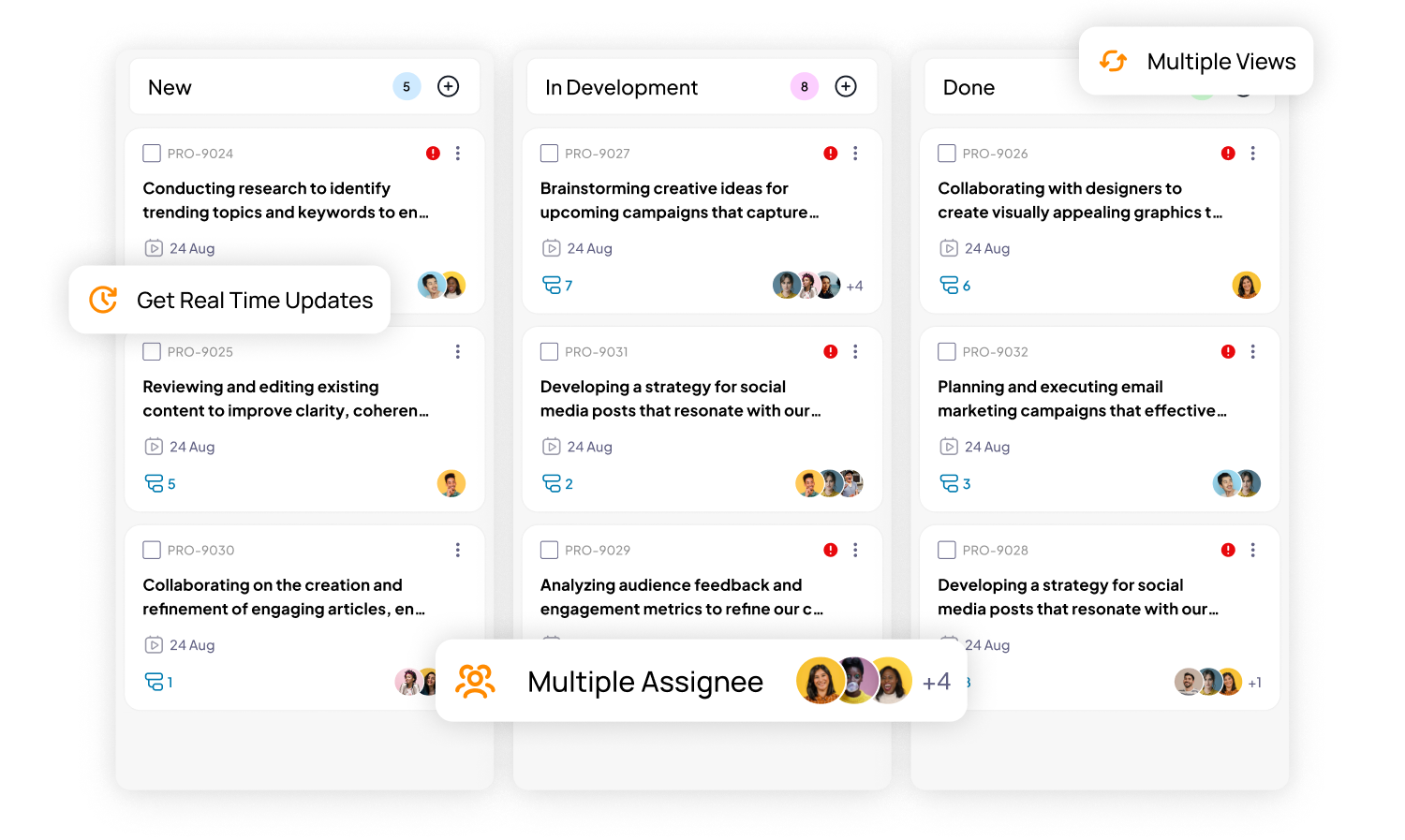Project management is a complex process with multiple layers, all stacked on one another. In the excitement of starting a project, many project managers loosely define the project scope without paying much heed to it.
But an ill-defined scope can disrupt the entire project plan, without the PM realizing it before it’s too late. Therefore, it is essential to properly define the project scope. Good project scope is vast enough to accommodate all the deliverables yet small enough to have actionable goals.
This post covers what project scope is and how to define it. Let’s dive in.
What is a Project Scope?
Before we dive into how you can define a project scope, let us first understand what it actually is. Project scope is a method used to set boundaries for a successful project execution.
There are multiple metrics defined using the project scope including the exact deadlines, goals, and deliverables your team will be working on. You can also determine the resources and the strategy needed to accomplish your goals with it.
However, defining a project’s scope is not just a project manager’s decision. The scope should be discussed with all key project stakeholders and the team working on it. This ensures that all the professionals working on the project are on the same page.
How to Define a Project Scope?
Now that you know what a project scope is, let’s take a look at how you can create one to manage your processes.
1. Determine your Goals and Objectives
Before you start working towards anything in the project, you need to know what it is. Therefore, having measurable objectives and goals is important in the process of project scope.
Project objectives or goals serve as a guiding light that shapes the project’s desired outcomes. By setting clear and actionable objectives, project managers determine the parameters within which their project can smoothly operate.
2. Create a Resource Plan
How many hours of manual work will help you achieve the results you want? What amount of cash will you need to invest in the project for successful operation?
Everything from the location, time, transportation, people, and tools that help you complete your project is a resource. It is important to know the exact amount of resources required to fulfill a task for accurate results.
Pro tip: Use a time and resource management platform to keep track of all your resources in one place.
3. Outline Potential Roadblocks
While working on a project, it is important to keep track of certain aspects that could derail or make the team lose track of their tasks in the project. These roadblocks could be an inflated budget, prolonged deadlines, poor-quality work, and much more.
A project manager should account for such possibilities and assess their influence so that they can be prepared if and when such events occur.
4. Identify Constraints
Learning what is outside your project’s scope is as crucial as identifying what should be included. Identifying and stating every constraint or exclusion in your project will prevent scope creep. Account for such things, including the ad hoc tasks your team does to prevent unnecessary work being added to your team’s tasks that are outside their capability.
5. Create a Milestone Schedule
After laying out all of the project’s goals, roadblocks, and resources, project managers must now put together a generic timeline of what the team can achieve within the project. Setting up specific milestones within the project helps all team members monitor their work progress with regard to the project.
6. Make your Project Scope Statement
After defining all the necessary points, it is now time to start drafting your project scope statement. Gather all the key data you have jotted, from your resources and roadblock research to discussions with important stakeholders.
Your project scope statement does not need to be a scary document filled with jargon. It can be a simple list of action points detailing the factors mentioned above, or a few paragraphs, based on the complexity of your project.
Wrapping Up
Creating a project scope is one of the best ways to ensure your team does not burn out and your team’s goals are met. It supports your team to accomplish milestones successfully. But keep in mind that a project scope is only useful if communicated well and understood by the team. So, refer to it while the project is under execution and keep it available to all team members.








